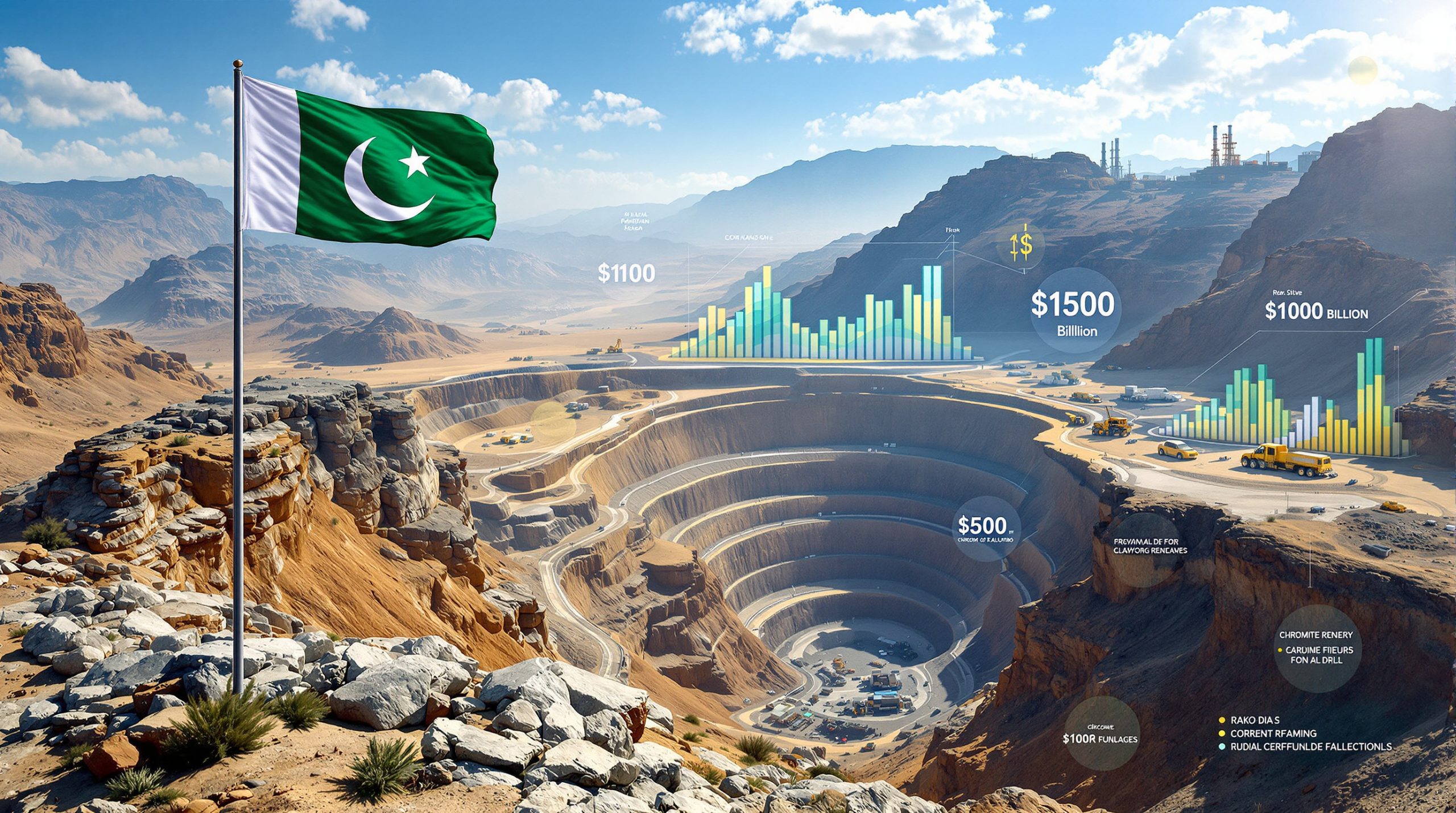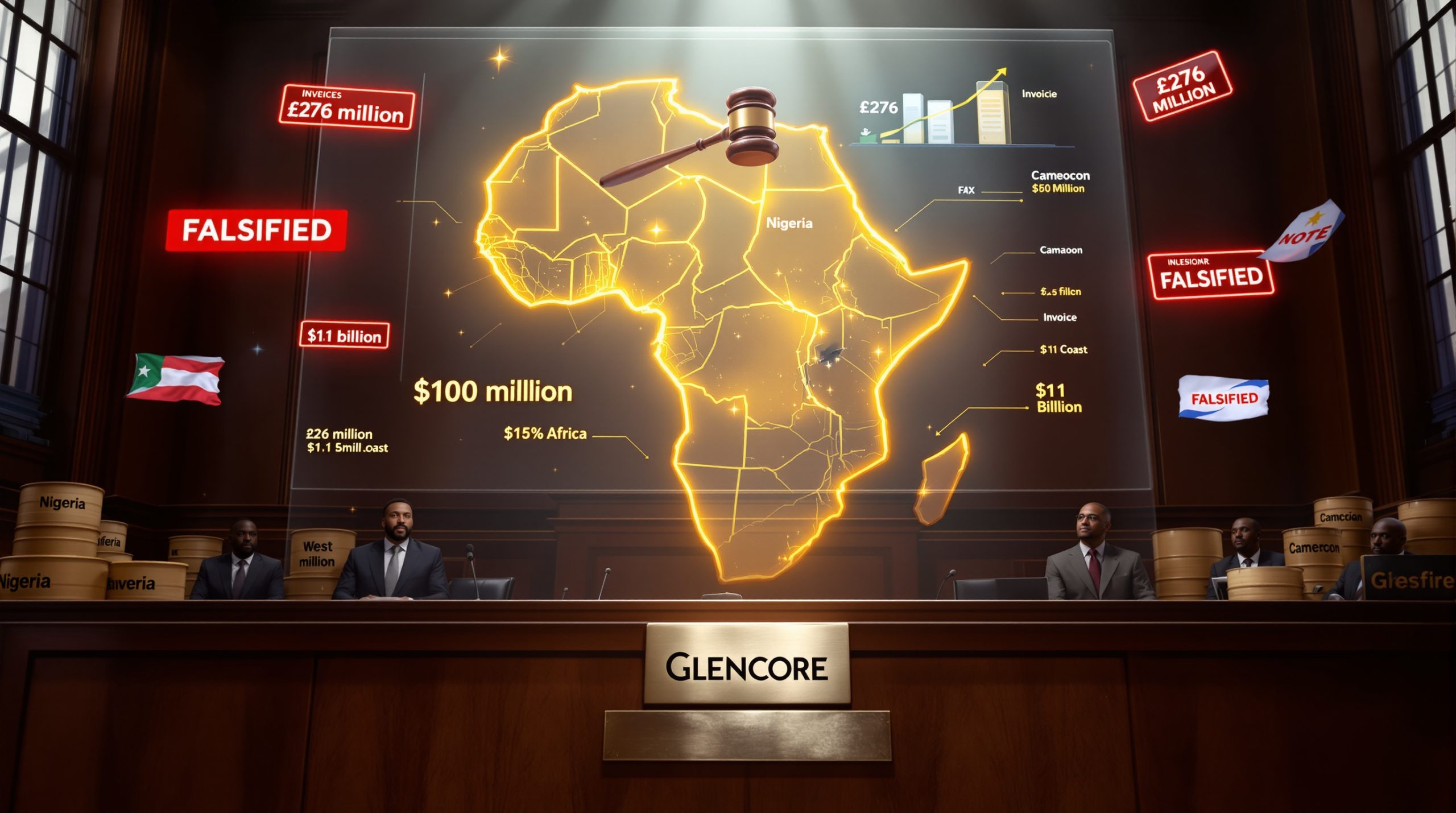Strategic Market Realignment in Global Iron Ore Trade
Vale gearing up to meet Indian demand represents a fundamental shift in global commodity trade patterns. Brazil's mining giant is executing a calculated pivot toward Asia's fastest-growing steel market as Chinese consumption stabilises at historic levels. This strategic repositioning reflects broader structural changes where emerging economies become primary growth drivers while developed markets reach consumption maturity.
The company's geographic demand redistribution strategy addresses declining growth prospects in China, where steel production has flattened near 1 billion metric tons annually. Vale CEO Gustavo Pimenta articulated this transition during a November 2025 interview, stating that Chinese steel production will probably remain steady and perhaps even decline in coming years, contrasting sharply with India's dynamic expansion trajectory.
What Drives Vale's Strategic Focus on Indian Steel Demand?
India's demographic scale creates unprecedented steel consumption potential that dwarfs other emerging markets. With 1.6 billion people surpassing China's population, the subcontinent requires massive infrastructure investments spanning urban development, transportation networks, and industrial facilities. This demographic dividend positions India as the world's most promising long-term steel market through the 2030s.
The structural demand drivers fundamentally differ from China's infrastructure-saturated economy. India's urbanisation remains in early stages, requiring extensive construction of residential complexes, commercial buildings, and public infrastructure. Rising living standards across the middle class will drive per-capita steel consumption from current low levels toward developed-nation benchmarks over coming decades.
India's Steel Production Trajectory
Indian steel producers plan capacity expansion on an unprecedented scale. The sector expects to double production capacity to approximately 300 million tons within five to seven years, representing one of the largest industrial capacity additions in modern history. This expansion timeline suggests completion by 2030-2032, coinciding with India's broader industrialisation goals.
The 12% annual growth rate in steel output compounds dramatically over multi-year periods, indicating robust demand across multiple end-use sectors. This sustained expansion rate reflects structural economic transformation rather than cyclical upticks, providing long-term visibility for raw material suppliers like Vale.
Key growth metrics include:
• Projected capacity expansion: Doubling to 300 million tons by 2030-2032
• Annual growth rate: 12% sustained expansion
• Infrastructure requirements: Massive urbanisation projects
• Manufacturing growth: Industrial facility construction driving demand
• Population dynamics: 1.6 billion people creating unprecedented scale
Complementary Ore Quality Profiles
Vale's premium iron ore grades create technical advantages when blended with India's domestic supply base. Indian ore deposits, whilst abundant in volume, typically contain lower iron content ranging from 50-60% Fe compared to Vale's high-grade concentrates and pellets exceeding 65% Fe content. This quality differential enables Indian steel mills to optimise production efficiency through strategic blending.
The metallurgical benefits of importing premium ore include reduced fuel consumption per ton of steel produced, improved blast furnace productivity, and enhanced final product quality. Indian integrated steel producers require these quality improvements to manufacture automotive-grade steel and other high-specification products for domestic and export markets.
Vale CEO Gustavo Pimenta emphasised this synergy: the company brings quality to the Indian mix, and as steel output doubles, significant growth opportunities emerge. This positioning addresses fundamental Indian steel production constraints whilst leveraging Vale's operational advantages in high-grade ore production.
Why Is China No Longer Vale's Primary Growth Engine?
China's steel sector has reached structural equilibrium after decades of explosive growth. Current production levels near 1 billion metric tons annually represent market maturity rather than cyclical suppression, with output having flattened despite varying economic conditions. These iron ore price trends reflect multiple converging factors that collectively limit future expansion potential.
The Chinese economy's transformation from infrastructure-heavy to service-oriented fundamentally reduces steel intensity per unit of GDP growth. Major infrastructure projects including high-speed rail networks, highway systems, and urban development have largely achieved completion in primary markets. Remaining projects tend toward maintenance and incremental expansion rather than massive new construction.
Market Saturation Indicators
Several indicators confirm China's steel demand maturation:
• Production plateau: Output stabilised near 1 billion tons despite economic fluctuations
• Demographic shifts: Aging population reducing construction activity
• Urbanisation completion: Most major cities fully developed infrastructure
• Economic rebalancing: Services sector growth displacing manufacturing
• Property sector decline: Real estate downturn reducing construction steel needs
The property sector downturn particularly impacts construction steel demand, as residential and commercial development activity declines from historic peaks. Government policies emphasising economic rebalancing toward domestic consumption and services further reduce steel-intensive investment categories.
How Significant Is Vale's Current Indian Market Penetration?
Vale's Indian market presence demonstrates rapid expansion from minimal baseline levels. The company exported approximately 10 million tons to India in 2024, representing dramatic growth from almost zero volumes just a few years prior. This achievement reflects successful commercial negotiations with Indian steel producers and established logistics capabilities for direct Brazil-India shipments.
However, current Indian volumes remain modest compared to Vale's China exposure, where approximately 60% of total sales concentrate. This disparity highlights both the opportunity scale and execution challenge as Vale gears up to meet Indian demand, seeking geographic diversification of revenue sources.
| Market Comparison | Current Status | Strategic Significance |
|---|---|---|
| India exports (2024) | 10 million tons | Rapid growth from near-zero baseline |
| China market share | ~60% of Vale's total sales | Dominant but stagnating market |
| Vietnam projection (2025) | 8 million tons | Sharp increase from previous years |
| Regional diversification | Expanding across Asia | Reducing China dependency risk |
The Vietnam market projection of 8 million tons for 2025 represents another significant Asian expansion component. Combined Indian and Vietnamese volumes approach 18 million tons annually, indicating Vale's broader Southeast Asian strategy beyond India specifically.
What Production Capabilities Support Vale's Asian Expansion?
Vale's Novo Carajas program represents the company's largest capacity expansion initiative, designed specifically to meet growing Asian demand. The 70 billion reais ($12.95 billion) investment through 2030 will add 20 million tons of annual iron ore capacity, representing approximately 15-20% increase to Vale's total production capabilities.
Currently 80% complete, the program targets operational commencement in late 2026. This timeline positions additional capacity availability precisely as Indian steel expansion accelerates through the decade's latter half. The Northern System focus enables high-grade ore production suited for Asian market quality requirements.
Production Performance Metrics
Recent operational achievements demonstrate Vale's capability to execute expansion plans effectively:
• Q3 2025 performance: 5% sales growth with highest iron ore output since 2018
• Capacity utilisation: Strong production levels indicating operational efficiency
• Quality consistency: Maintaining premium ore specifications during expansion
• Market positioning: Preparing to reclaim world's largest iron ore producer title
The production recovery to 2018 levels marks significant progress following the 2019 Brumadinho dam disaster. This operational restoration provides confidence in Vale's ability to execute further capacity additions whilst maintaining safety and environmental standards.
How Does Vale's Strategy Address Global Market Dynamics?
Current iron ore demand insights present both challenges and opportunities that shape Vale's strategic execution. Global oversupply conditions have maintained prices below $100 per tonne, creating pressure on higher-cost producers whilst potentially advantaging Vale's low-cost operations in price-sensitive emerging markets.
The oversupply environment results from increased production across major suppliers in Australia and Brazil, coinciding with weakened Chinese demand due to property sector difficulties. These conditions favour producers with operational scale, cost efficiency, and geographic diversification capabilities.
Market Positioning Advantages
Vale's competitive positioning includes several factors supporting market share growth in Asia:
• Cost structure: Low-cost operations enabling competitive pricing
• Quality differentiation: Premium ore grades commanding price premiums
• Logistics optimisation: Established shipping routes to Asian markets
• Supply reliability: Operational scale ensuring consistent delivery capabilities
The company's Northern System operations produce some of the world's highest-grade iron ore, creating differentiation opportunities in markets prioritising quality over lowest-cost alternatives.
What Role Does Copper Play in Vale's Diversification Strategy?
Beyond iron ore expansion, Vale targets doubling copper output by 2035 as part of broader commodity diversification. This copper price prediction reflects exposure to energy transition demand drivers including electric vehicle production, renewable energy infrastructure, and power grid expansion requirements.
Copper production integration within Northern System operations creates operational synergies and capital efficiency advantages. The combined iron ore and copper expansion approach optimises infrastructure investments whilst providing exposure to different demand cycles and end-market applications.
The copper expansion timeline extends beyond current iron ore capacity additions, providing sustained investment opportunities through the 2030s as energy transition demand accelerates globally.
Which Other Asian Markets Present Growth Opportunities?
Vale's Asian strategy encompasses multiple countries beyond India's primary focus. Vietnam represents the most significant secondary market, with projected 8 million tons for 2025 representing sharp increases from previous years. This growth reflects Vietnam's rapid industrialisation and infrastructure development requirements.
Southeast Asian economies collectively present attractive growth characteristics including young demographics, urbanisation trends, and manufacturing sector expansion. These markets complement India's scale with additional volume opportunities and geographic risk diversification benefits.
Regional Expansion Components
• Vietnam: 8 million tons projected for 2025
• Thailand: Industrial manufacturing growth driving steel demand
• Indonesia: Infrastructure development creating construction steel needs
• Malaysia: Economic diversification requiring industrial capacity expansion
Each market presents distinct characteristics requiring tailored commercial approaches, but collective volume potential supports Vale's Asian expansion strategy beyond India's dominant contribution.
What Challenges Could Impact Vale's Indian Market Strategy?
Execution risks span operational, competitive, and market factors that could influence strategy success. Australian iron ore suppliers maintain established relationships with Asian customers, creating competitive pressure for market share expansion. Moreover, understanding the largest iron ore mines 2025 and their competitive positioning reveals that Rio Tinto, BHP, and Fortescue possess logistical advantages through shorter shipping distances to Asian markets.
Price competition intensity may increase as global oversupply conditions persist, potentially pressuring profit margins despite volume growth. Vale must demonstrate clear value propositions through quality differentiation, service reliability, or cost advantages to justify market share gains.
Operational Considerations
Several operational factors require careful management:
• Production scaling: Meeting increased demand whilst maintaining quality standards
• Infrastructure capacity: Ensuring adequate port and logistics capabilities
• Cost management: Maintaining competitiveness during price pressure periods
• Quality consistency: Delivering premium ore specifications across volume expansion
The company's track record of operational execution provides confidence, but expansion scale and timeline create inherent execution risks requiring continuous monitoring and adjustment.
What Does This Strategy Mean for Global Iron Ore Trade?
Vale's geographic pivot reflects broader structural changes in commodity trade patterns extending beyond iron ore specifically. The shift from China-centric to multi-polar demand distribution affects infrastructure investment, shipping routes, and supplier-customer relationship dynamics across the mining sector.
Traditional trade flows concentrated on Australia-China and Brazil-China routes, but emerging market growth necessitates new logistics networks and partnership structures. Furthermore, Australia's iron ore leadership creates opportunities for suppliers capable of adapting to changing geographic demand patterns whilst maintaining operational efficiency.
Industry Implications
The transformation affects multiple industry dimensions:
• Supply chain reconfiguration: New shipping routes and port infrastructure requirements
• Investment priorities: Capital allocation toward growth markets rather than mature economies
• Competitive dynamics: Market share competition intensifying in emerging economies
• Partnership strategies: Long-term supply agreements with growing steel producers
These changes require strategic repositioning across the global mining sector, with companies successfully adapting to new demand patterns gaining competitive advantages over those maintaining traditional market focus.
Future Outlook: Will Vale's Indian Strategy Succeed?
Success probability depends on multiple converging factors including Indian economic growth sustainability, competitive positioning execution, and operational scaling capabilities. India's demographic dividend and infrastructure requirements provide strong fundamental support for steel demand growth through the 2030s.
However, execution quality will determine market share capture and profitability achievement. Vale must successfully scale production capabilities, maintain quality standards, and develop effective customer relationships across Indian steel producers whilst competing against established Australian suppliers.
Growth Catalysts
Several factors support strategy success potential:
• Indian industrialisation: Sustained infrastructure development driving steel consumption
• Demographic advantages: Young population supporting economic growth
• Urbanisation trends: City development requiring massive steel inputs
• Manufacturing expansion: Industrial capacity growth creating steel demand
Risk Factors
Potential challenges include:
• Market volatility: Commodity price fluctuations affecting profitability
• Competition intensity: Established suppliers defending market positions
• Execution complexity: Managing large-scale capacity expansion effectively
• Economic uncertainty: Global or regional downturns impacting demand growth
Vale gearing up to meet Indian demand positions the company for the next phase of global steel market evolution whilst reducing dependence on China's maturing economy. The strategy's ultimate success depends on effective execution across production scaling, quality maintenance, and competitive positioning in rapidly growing Asian markets.
Disclaimer: This analysis contains forward-looking assessments based on current market conditions and company statements. Commodity markets involve inherent volatility and investment risks. Readers should conduct independent research and consider professional advice before making investment decisions.
Looking to Capitalise on Emerging Market Mining Opportunities?
Discovery Alert's proprietary Discovery IQ model delivers instant notifications on significant ASX mineral discoveries, helping investors identify actionable opportunities in emerging markets like India's expanding mining sector. Stay ahead of market movements by exploring Discovery Alert's dedicated discoveries page, showcasing historic examples of exceptional returns from major mineral discoveries, and begin your 30-day free trial today.




